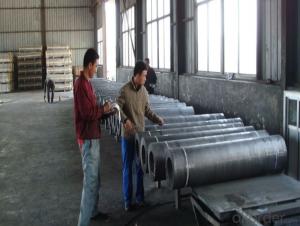When it comes to the heart of the steelmaking process, graphite electrodes play a pivotal role. These cylindrical wonders are the unsung heroes of the Electric Arc Furnace (EAF), where they generate the heat required to melt scrap metal. But what exactly are graphite electrodes, and why are they so crucial? Let’s dive into the fascinating world of these carbon-based workhorses and uncover their secrets.
First things first, let’s talk about the composition of graphite electrodes. Made primarily from petroleum coke and coal tar pitch, these bad boys are heated and processed to achieve a high degree of crystallinity. This gives them their unique properties, such as high electrical conductivity and thermal shock resistance. And yes, I did say ‘thermal shock resistance’ – these electrodes can handle some serious heat!
Now, let’s get into the nitty-gritty of how they work in an EAF. When the electrodes are lowered into the furnace, they create an electric arc, which is essentially a superheated path of ionized air. This arc transfers electrical energy into the furnace, heating the scrap metal to temperatures above 1,600 degrees Celsius. That’s hot enough to melt steel, people! And it’s all thanks to the graphite electrodes.
But why graphite? Well, graphite has a natural affinity for electricity, making it an ideal material for conducting electricity. Plus, it’s got a low thermal expansion coefficient, which means it doesn’t expand much when heated. This is crucial for maintaining the structural integrity of the electrodes during the intense heat of the EAF process.
One might wonder, what happens when these electrodes wear out? It’s a valid concern, as they do degrade over time due to the intense operating conditions. However, the good news is that they can be再生 and repurposed. The worn-out electrodes are ground down, and the graphite material is recovered and used to create new electrodes. It’s a pretty neat recycling process that helps reduce waste and keeps our environment a little greener.
The production process of graphite electrodes is quite an adventure in itself. It starts with the mixing of raw materials, followed by molding and baking. The baking process is where things get intense, as the mixture is heated to temperatures exceeding 1,000 degrees Celsius. This high-temperature treatment transforms the raw materials into a dense, highly crystalline structure.
As the demand for steel continues to rise, so does the demand for graphite electrodes. The global market for these electrodes is expected to grow, driven by factors such as urbanization, industrialization, and the increasing need for energy-efficient steel production methods.
But it’s not all smooth sailing. The graphite electrode industry faces challenges, such as fluctuations in raw material prices and the environmental impact of production. However, advancements in technology and a focus on sustainability are helping to address these issues.
In conclusion, graphite electrodes are more than just a component in the steelmaking process; they are a testament to human ingenuity and our ability to harness the power of nature for our benefit. They are the unsung heroes of the EAF, and it’s about time we recognize and appreciate their importance.

